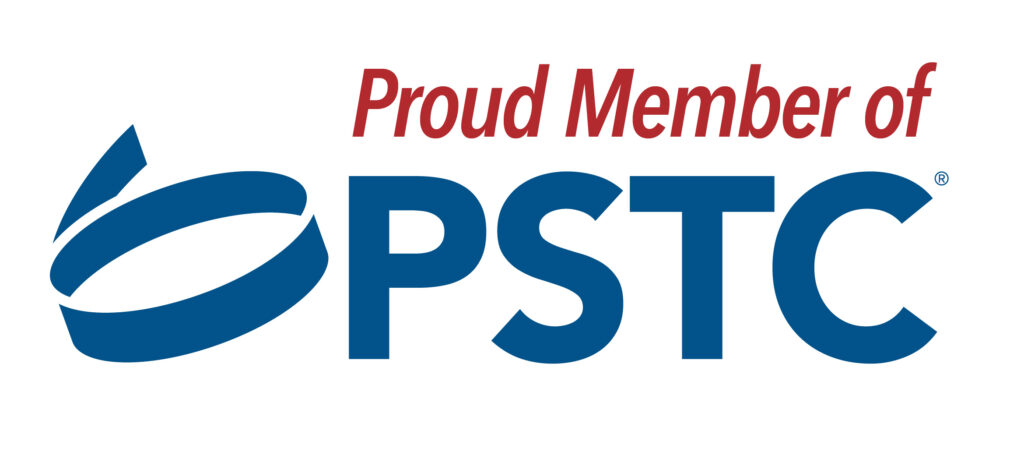Oxidation is a degenerative process that synthetic and natural organic materials are susceptible to during manufacturing and the lifetime of end products. Plastics, organic lubricants, and all products with organic components need to be protected to prevent the effects of oxidation reactions, which include:
- Discoloration
- Loss or uncontrolled modification of physical properties
- Molecular degradation
- Product failure
Oxidation can start to occur whenever synthetic and natural organic products are exposed to oxygen. The presence of heat and chemical oxidizers—or free radicals—aggravates this reaction. This can happen during high-heat processing or exposure to high temperatures during transportation, storage, and end usage.
Antioxidants are chemical products that prevent oxidation and protect materials from exposure to oxygen and other oxidizers. Depending on the nature and environment of a product, they may need a unique antioxidant or even a blend of chemicals to achieve oxidative stability. The following product components benefit from antioxidants:
- Adhesives
- Coatings
- Elastomers
- Lubricants
- Plastics
The chemical families of antioxidants listed below are designed to provide effects at different stages and temperatures. High-quality antioxidants also have little to no discoloring effect on the substrates.
Phenolic Antioxidants
Phenolic antioxidants—or hindered phenol antioxidants—are typically plant-based compounds, and there exists a wide variety of natural and synthetic phenolics that can protect organic products. In diets and food processing procedures, phenolic antioxidants inhibit lipid oxidation.
These hydrogen-rich compounds can easily contribute hydrogen molecules to bind with and lower the energy of oxygen-rich free radicals. This process designates phenolic antioxidants as free radical scavengers—protective elements that target and block free radicals from reaching the substrate.
However, phenolic antioxidants can only succeed when their chemical binding process is easier than that between the free radicals and the core organic product being protected. Sometimes misapplying an antioxidant can lead to the removal of too much hydrogen and the antioxidants themselves turn into radicals. That’s why it’s essential to choose the correct phenolic antioxidant for each product material and process.
Mayzo, Inc. provides the following selection of phenolic antioxidants:
- BNX 245
- BNX 358
- BNX 549
- BNX 565
- BNX 1010
- BNX 1035
- BNX 1037
- BNX 1076
- BNX 1098
- BNX 1135
- BNX 1425
- BNX 2246
- BNX 3052
- BNX 3595
- BNX 8000
- BNX TAHQ
Each hindered phenol antioxidant listed above is designed to be paired with a specific organic product. They can also be combined with phosphites and thiosynergists to create stronger antioxidant properties.
Phosphite Antioxidants
Each antioxidant provides different protective effects at the various periods of processing, storage, and usage. While some products may be suited for long-term exposure to lower temperatures, others are best suited for high-temperature environments.
Phosphite antioxidants are built to protect materials when they are being processed at high temperatures. They are best suited for:
- Organic adhesives
- Coatings
- Plastics
At Mayzo, Inc., we offer the following phosphites:
Benefos 1618
Like all phosphite antioxidants, Benefos 1618 decomposes peroxides. It pairs well with the following organic materials:
- Adhesives
- Elastomers
- Plastics
This antioxidant prevents polymer discoloration and increases UV stability in some substrates. It is a good match with substrates that will be exposed to the elements during use or storage.
Benefos 1626
This phosphite contains high levels of phosphorus. This chemical concentration makes Benefos 1626 highly stable in the presence of heat. As such, it can be used in conjunction with benzophenones, benzotriazoles, and other light stabilizers.
Benefos 1680
This phosphite antioxidant has low volatility. It also resists hydrolysis—chemical breakdown in the presence of water. Other qualities of Benefos 1680 include:
- Heat stability
- Strong antioxidation effects
- Extraction resistant
- Compatibility with resins
For superior antioxidant protection during high-heat processing and longer thermal stability at reduced temperatures, manufacturers can blend phosphites with other chemical families of antioxidants.
Antioxidant Blends
To protect substrates during every step of manufacturing, transportation, storage, and end-use, manufacturers can combine antioxidants to produce myriad effects. Each chemical family of antioxidants has different stabilization effects under varying conditions. For example, long-term free radical scavengers can be blended with phosphites that help substrates withstand oxidation during high-temperature processing.
Key antioxidant blends provide synergistic protection—antioxidant protections that are stronger than each individual antioxidant alone. It’s important to use antioxidant blends precisely suited to a product’s unique substrate, especially when the substrate has multiple components and inserts.
Our selection of antioxidant blends includes:
- BLX 2811
- BNX 1000
- BNX 1171
- BNX 1215
- BNX 1225
- BNX 1225 TPR
- BNX 1249
- BNX 1411
- BNX 1900
- BNX 2301
- BNX 2777
- BNX 5010 TPR
Many of these blends are specifically formulated with antioxidants for heat stabilization and protection against long-term exposure.
Metal Deactivators
Phenolic antioxidants that react with metal ions are called metal deactivators. These metal deactivator polymers protect plastic substrates that are exposed to metals during processing, application, and usage. Metal ions can increase oxidation in surrounding materials, such as plastics that are in constant contact with metals such as wires, cables, and parts with metal inserts.
Copper and iron ions are particularly dangerous because they can accelerate the oxidation process in unprotected plastics. Different metal deactivator polymers are used based on:
- Metal type
- Substrate composition
- End-use conditions (temperature, oxygen exposure, moisture exposure)
Mayzo, Inc. provides the following metal deactivator polymers:
BNX MD-1024
This metal deactivator protects insulating polymers against exposure to copper ions. It can also protect substrates during high-heat fabrications and processing.
BNX MD-1097
This hindered phenolic antioxidant is used for longer-term end-use applications to provide thermal stabilization. It is a non-staining and non-discoloring product that protects polymers from contact with copper.
Thiosynergists
Like phosphite antioxidants, thiosynergists decompose peroxides in order to provide anti-oxidative properties. While they generally provide lower levels of protective effects during processing at high temperatures, they pair excellently with phenolic antioxidants. A blend of phenolic antioxidants and thiosynergists protect plastics from high levels of heat during transportation, storage, and end use.
This gives the substrates long-term stability against temperatures in environments such as automobiles, pipes, industrial facilities, and commercial wiring ducts.
The following thiosynergists are available through Mayzo, Inc.:
BNX DLTDP
This thiosynergistic antioxidant is a thioether compound, which is similar to an ether save for its inclusion of a sulfur atom instead of oxygen. This helps create a stabilizing effect for substrates because thioethers can be oxidized in lieu of the substrate. It also prevents discoloration and is a secondary antioxidant commonly paired with hindered phenolic antioxidants.
It’s particularly well-suited for use with the following substrates:
- Petroleum products
- Plastics
- Rubber products
- Synthetic fibers
BNX DSTDP
This thioether antioxidant scavenges peroxides. It stops the continued degradation of plastics following thermal degradation. This product matches well with adhesives, polyolefins, and styrenic polymers. While the majority of thioethers have sulfuric odors, this antioxidant is relatively mild and useful for a wider range of customer-facing applications.
Antioxidants at Mayzo, Inc.
Mayzo, Inc. prides itself on providing a wide range of antioxidant compounds that protect organic substrates from the start of the manufacturing process to end usage and storage. Along with the antioxidant classes listed above, Mayzo, Inc. also offers:
- Amine antioxidants
- HALS
- Hydroxalmine systems
We also provide stabilizers, release coatings, and more. Our products are specially designed to keep your products safe and preserved, without discoloration or damage.
Contact our team to find the best antioxidant or antioxidant blend to protect your facility’s products. You can also fill out our inquiry form for specific recommendations and quotes.





